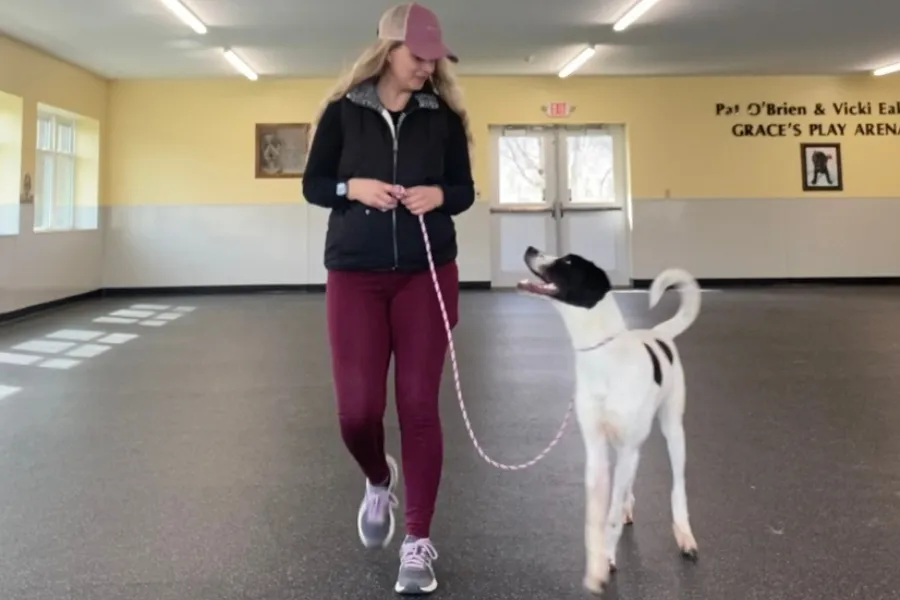When it comes to dog training, the recall command is arguably one of the most crucial safety skills you can impart to your canine companion. While “come” is the most commonly used word, its frequent use in everyday conversation can dilute its effectiveness, making it less impactful when you truly need your dog’s immediate attention. This post delves into the importance of distinct recall cues and offers a comprehensive list of alternative words to enhance your dog’s responsiveness, ensuring clearer communication and a stronger bond.
The Power of a Unique Recall Word
Choosing a specific recall word that isn’t part of your daily vernacular is paramount for effective dog training. When a word is reserved solely for calling your dog, it retains its authority and clarity. This prevents your dog from becoming confused by a multitude of similar-sounding phrases and ensures they understand the urgency and importance of the command. Imagine your dog at a park, surrounded by other dogs and owners. If multiple owners are calling “come,” your dog might not distinguish which call is directed at them. A unique recall word eliminates this ambiguity.
Furthermore, a distinct command is especially helpful when dealing with a stubborn dog. If your dog seems less inclined to return, it might be due to a lack of clarity regarding the command itself or a history of the word “come” being used repeatedly without consistent success. By introducing a new, dedicated recall word, you can effectively reset the training process and build a stronger foundation of responsiveness.
When to Consider a New Recall Word
If your dog’s success rate with the current “come” command is below 80%, it’s a clear sign that it’s time to introduce a new word and re-establish the training protocol. For those just beginning to teach recall, “come” can be an excellent starting point, provided you are diligent about using it exclusively for the recall command and avoid variations like “come on,” “come here,” or “come now.” Treating your recall command with the respect it deserves will, in turn, encourage your dog to take it seriously.
For those facing challenges with distractions, understanding how to train a dog to come off leash can be a game-changer. This advanced training requires a solid foundation with a clear and consistent recall cue.
Selecting the Ideal Recall Command
When selecting an alternative recall word, consider these factors:
- Frequency of Use: Avoid words that are frequently used in casual conversation. Words like “come” and “here” are often said multiple times a day, potentially confusing your dog.
- Word Length: Shorter words, typically one to two syllables, are easier for dogs to recognize and for you to project across distances.
- Natural Fit: Choose a word that feels natural and comfortable for you to say.
- Distinctiveness: Ensure the chosen word doesn’t sound too similar to other commands you use. For instance, “heel” and “here” can be easily confused by a dog.
- Whistle Training: While a whistle can be an effective tool, it’s best employed when you can consistently produce the same pitch and tone. Using a whistle is particularly useful for long-distance recalls or in noisy environments. If you’re considering this method, exploring resources like training a dog to come to a whistle can provide valuable insights.
Beyond “Come”: A Lexicon of Recall Words
To help you find the perfect alternative, here is an extensive list of recall words, categorized for ease of selection. These alternatives can also be used in conjunction with hand signals. Learning about obedience training AKC dog training hand signals can further enhance your communication with your dog.
Emergency Recall Words
These are strong, urgent words suitable for critical situations.
- Here
- Now
- Hurry
- Chop
- Quick
- Aqui
- Stat
- Venga
- Front
- Move
- Hustle
- Let’s go
- Run
- Go
- Velcro
 Dog looking intently
Dog looking intently
Fun Recall Words
Inject some personality into your training with these playful options.
- Speed
- Accio
- Jackpot
- Pronto
- Zip
- Houston
- Chevy
- Pop
- Fish
- Treat
- Snacks
Unique Recall Words
Stand out from the crowd with these less common, yet effective, cues.
- Heigh-Ho
- Boot
- Hup
- Heifer
- Top
- Queue
- Escape
- Soccer
- Froggy
- Red
- Gluestick
- Clutch
- Mayday
- Lightening
Words to Use for Recall
A broad selection of effective words that can be incorporated into your training.
- Shotgun
- Money
- Cali
- Flip
- Yeehaw
- Bamboo
- Slingshot
- Pebble
- Bones
- Accent
- Whiskey
- Touche
For those interested in specific breeds or commands, exploring resources like German commands for a German Shepherd can offer additional training vocabulary. When aiming to teach your dog to come off leash, a well-chosen and consistently used recall word is foundational.
Conclusion: The Art of Effective Recall
Establishing a reliable recall is fundamental to your dog’s safety and your peace of mind. By moving beyond the overused “come” and selecting a unique, impactful alternative, you can foster a clearer line of communication with your canine companion. Remember that consistency and positive reinforcement are key to success. If you’re encountering persistent recall challenges or wish to refine your dog’s responsiveness in various environments, consider consulting with a professional dog trainer or exploring specialized training programs. Your commitment to clear, effective communication will pave the way for a well-behaved and happily responsive dog.
